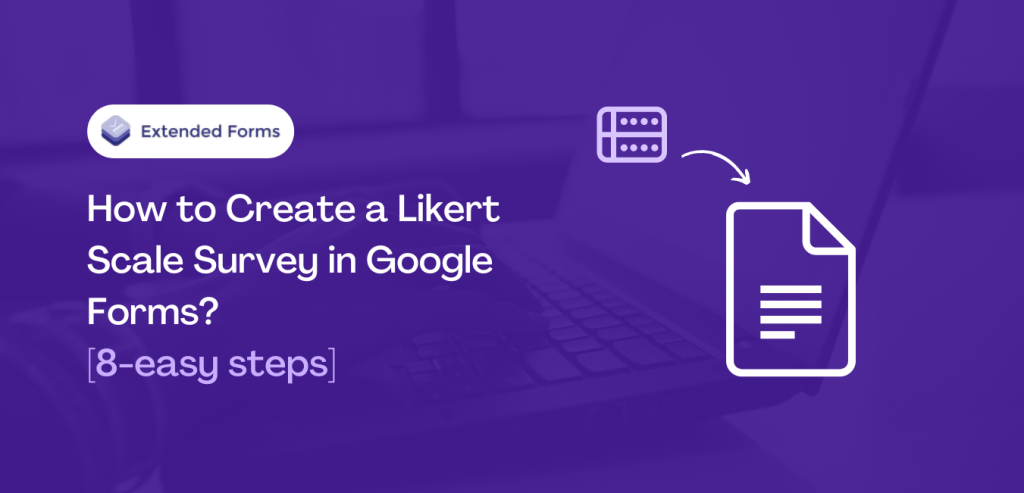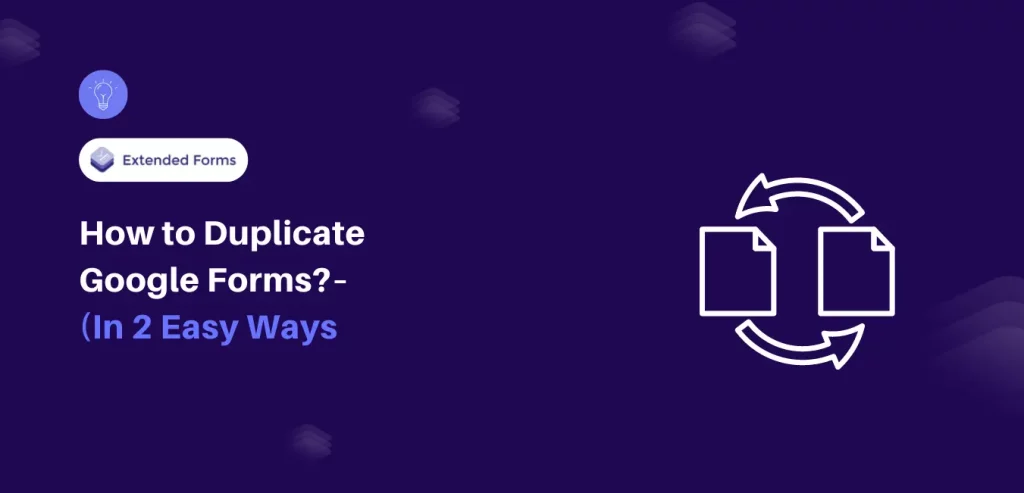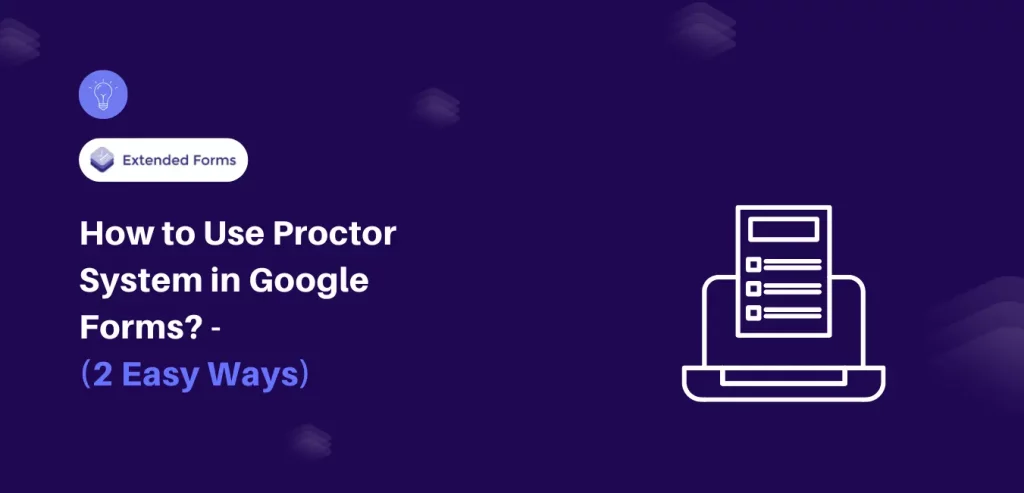We can all agree that people hold different opinions on a single topic, let alone varying topics. Some might have liberal views on certain matters, while others might hold conservative opinions or challenge certain ideologies.
That’s where Likert Scale Survey comes into the picture!
So, the Likert scale helps to measure people’s opinions about a topic with various statements and a rating scale. If you are looking to create an awesome Likert scale survey in Google Forms, then you’re right where you need to be.
Let’s get into the article and discuss how to create the Likert scale survey, its benefits, and tips to make Likert scale questionnaires effective.
Table of Contents
Key Takeaways
- The Likert scale is a psychometric scale commonly involved in survey research that employs a questionnaire. It is a unidimensional scale used to collect respondents’ opinions and attitudes.
- The Likert scale is popular in surveys because of its multiple reasons or benefits it is easy to understand, doesn’t force an opinion, can be useful in any situation, and more.
- To create a Likert scale survey there are some tips to follow to make the outcomes credible. Such as being as specific as possible, selecting an appropriate response scale, being consistent, and using questions more than statements.
- Lastly, the Likert scale is easy to create in Google Forms, though it doesn’t have a Likert scale option, one can use a multiple-choice grid question type to create a Likert scale questionnaire.
What is a Likert Scale Questionnaire?
According to Wikipedia, the Likert scale is a psychometric scale commonly used in research that employs questionnaires. It is the most widely used approach to scaling responses in survey research.
The Likert scale is a unidimensional scale that collects respondents’ opinions and attitudes. To get a holistic view of people’s opinions, the choices range from polar opposites such as ‘strongly disagree to strongly agree.’
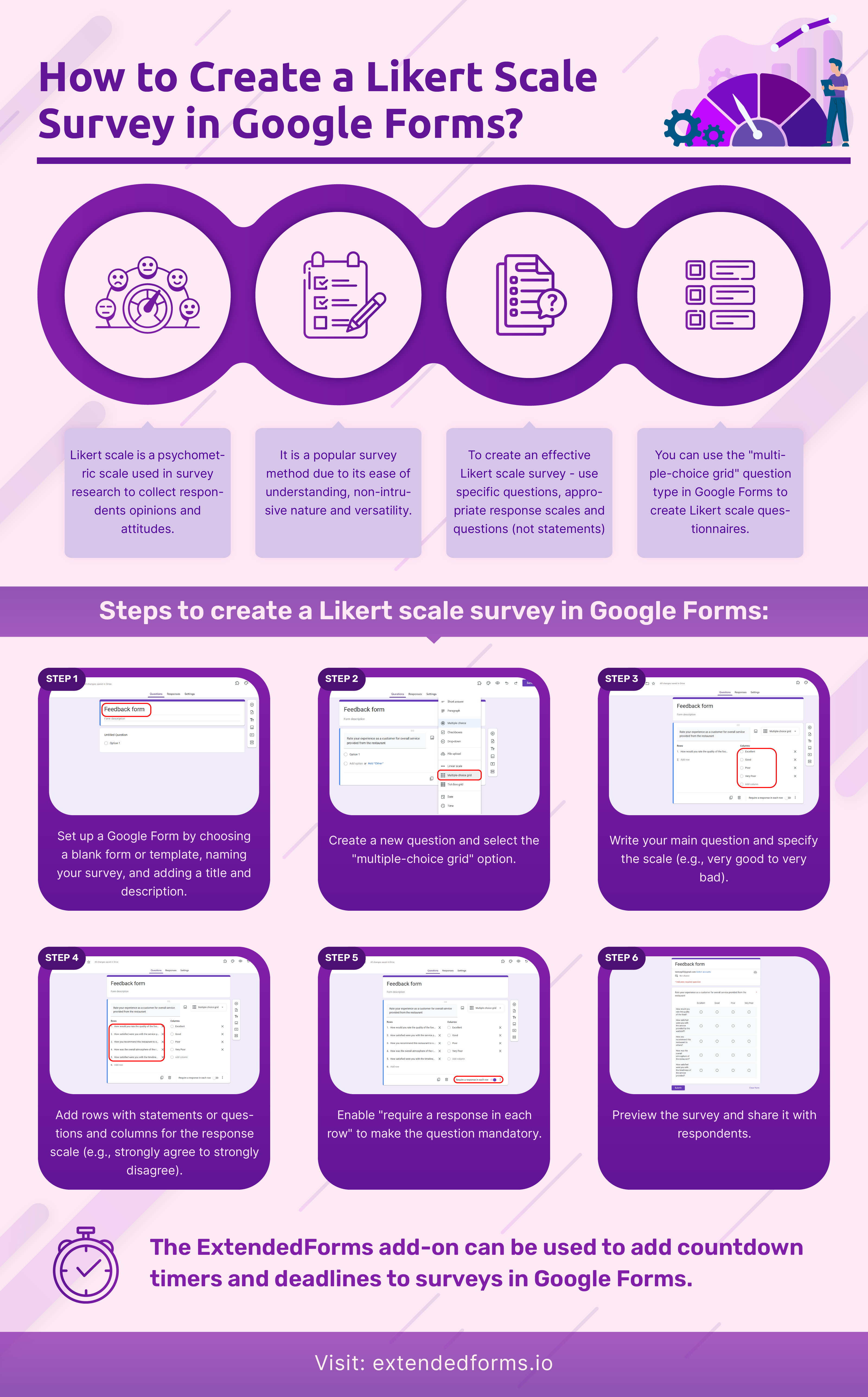
However, in the case of odd-numbered Likert scales, the responses also include a mid-point i.e, a ‘neutral’ category option for people who are unsure of the statement.
There are different use cases to include a Likert scale questionnaire:
- Employee Engagement Survey – When you want to collect feedback about what your employees think of your organization’s activities
- Customer Satisfaction Survey – When you want to understand your customers’ opinions about the products or services they use
- Professional event feedback – When collecting participants’ reviews on the event’s success, the Likert scale proves useful.
In these use cases, the Likert Scale mostly includes the following types of response options:
- Quality – Very Poor (or Bad), Poor, Average, Good, Excellent
- Agreement – Strongly agree, agree, neutral, disagree, strongly disagree
- Likelihood – Extremely unlikely, somewhat unlikely, neutral, somewhat likely, extremely likely
Benefits of the Likert Scale Survey
The Likert scale is popular in surveys, especially when researchers or marketers want to analyze the target audience’s opinions and attitudes regarding topics.
Likert scale ratings are structured to provide quantifiable answer options that make analyzing data easier.
It is popular for multiple reasons, and here are a few key reasons:

1. Easy to Understand
Unlike other complex surveys with broad questions, Likert scale surveys use straightforward language that is easy for respondents to comprehend. Moreover, the responses are easier to quantify and can be calculated using mathematical analysis.
2. Doesn’t force an Opinion
Another reason why the Likert scale survey is so popular is that it doesn’t force respondents to provide answers they might be uncomfortable with. The Likert scale questionnaire allows respondents to respond to a degree of agreement, thus making it easier to complete a survey.
3. Best for surveys that are focused on one topic
Likert scale surveys are best when used for asking questions that revolve around one topic. When you ask questions that are relevant to a particular topic, it helps you get more accurate results. Because when it is time to report the data, you want to analyze findings that sum up the results from a few questions.
4. Quantifiable Data
The responses garnered from Likert scale questionnaires are easy to quantify at the time of evaluation, as they offer different choices to respondents rather than a simple yes/no. Hence, Likert scale surveys are more popular and convenient for businesses to effectively gauge customer sentiments.
How to Create a Likert Scale Survey in Google Forms?
Google Forms offers multiple-choice grid and linear grid question types that work perfectly for creating Likert scale surveys. While it’s not labeled specifically as a “Likert scale” option, these question types provide you with the settings to create Likert scale questions as it is.
Let’s walk through the steps to create a Likert scale survey in Google Forms.
1. Creating Google Forms
To create a form, go to Google Forms or navigate to the Google account menu on the right side of the homepage and select ‘Forms.’
Then, select a blank form or choose from different template options. It includes, but is not limited to, an event feedback form, customer feedback, job application, and more.

Once you open the form, start by adding the name of your survey, add a title and description to your survey, and include sections. Then, we will move forward to adding a Likert scale questionnaire to the form.
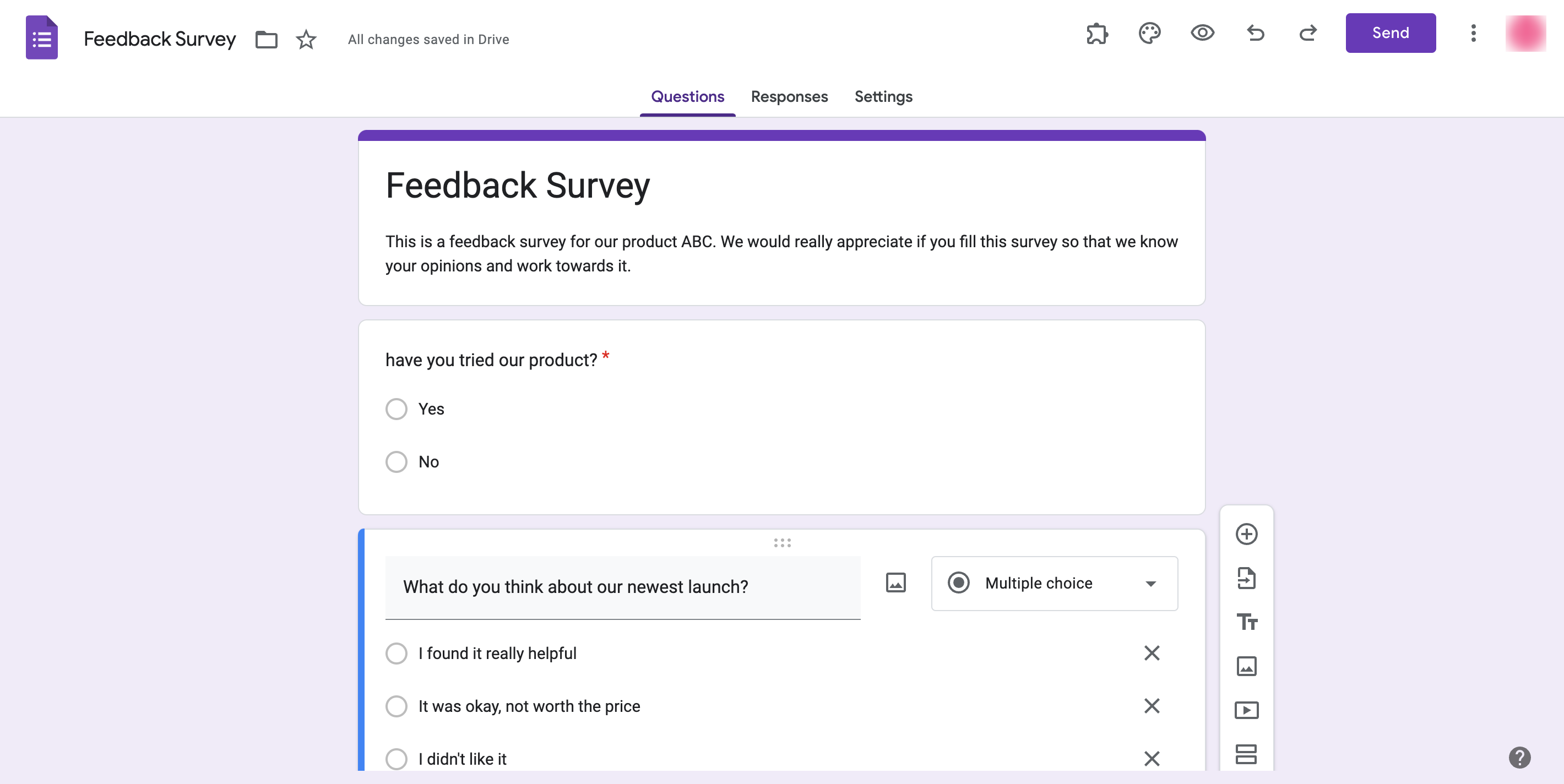
2. Adding Likert Scale Questions
Create a new question in Google Forms by clicking on this icon ⊕. Then click on the multiple-choice option dropdown box to extend the list of available question types. Select the ‘multiple-choice grid’ option from the question type.
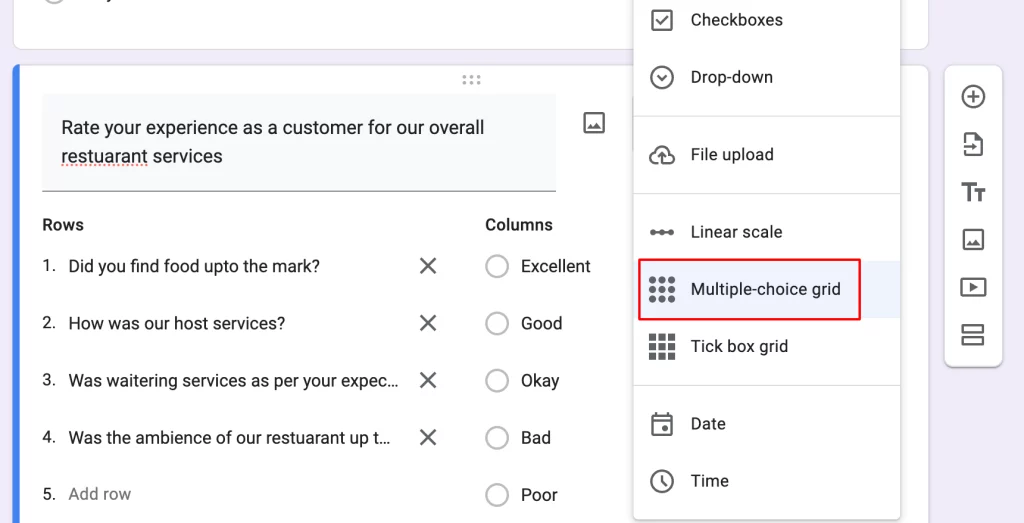
Write your main question in the title that explains what the Likert scale questionnaire is all about. And if you are using numbers as a scale then make sure to clearly mention the degree of the numbers i.e, very good – very bad
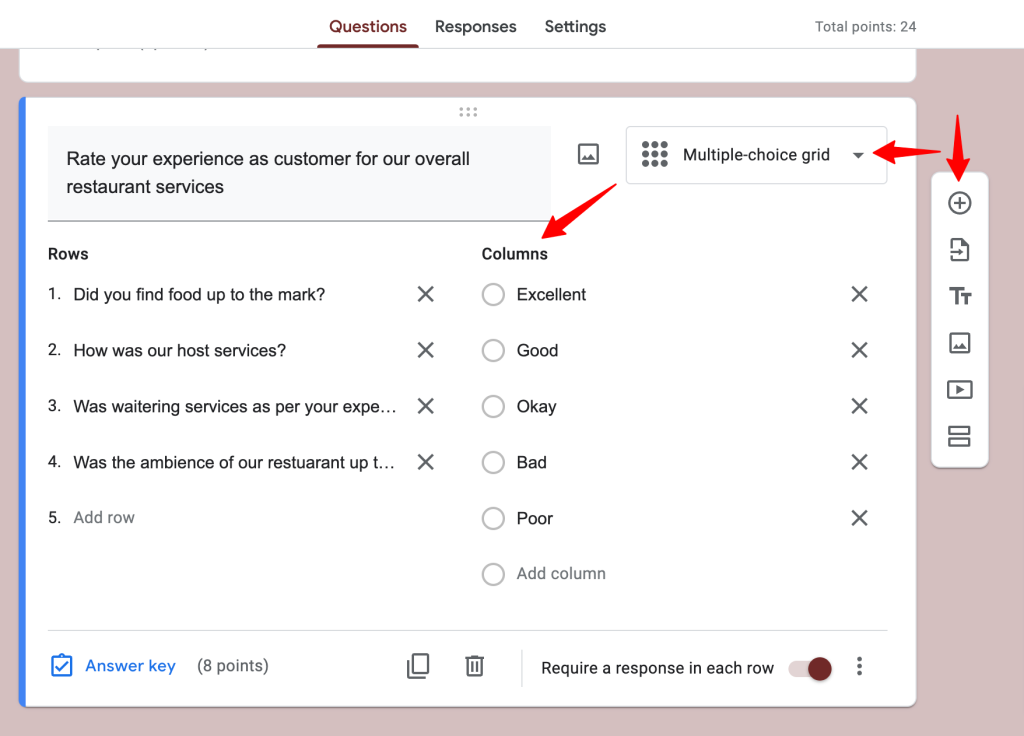
Add rows and columns, then put statements or questions in the Rows section. Put a scale in the Columns section, a typical example of it is – Strongly agree – strongly disagree.
3. Customize the Likert scale question
You can sort of customize a Likert scale question like you can enable ‘require a response in each row’ at the bottom of the question. It will make the question required and will push participants to attend every statement.
This was for the row, but apart from that you can also limit responses to one answer per column. Click on the ‘⋮’ and select ‘limit to one response per column.’ This will allow responses to only opt for one answer especially if you choose a tick-box grid question style.
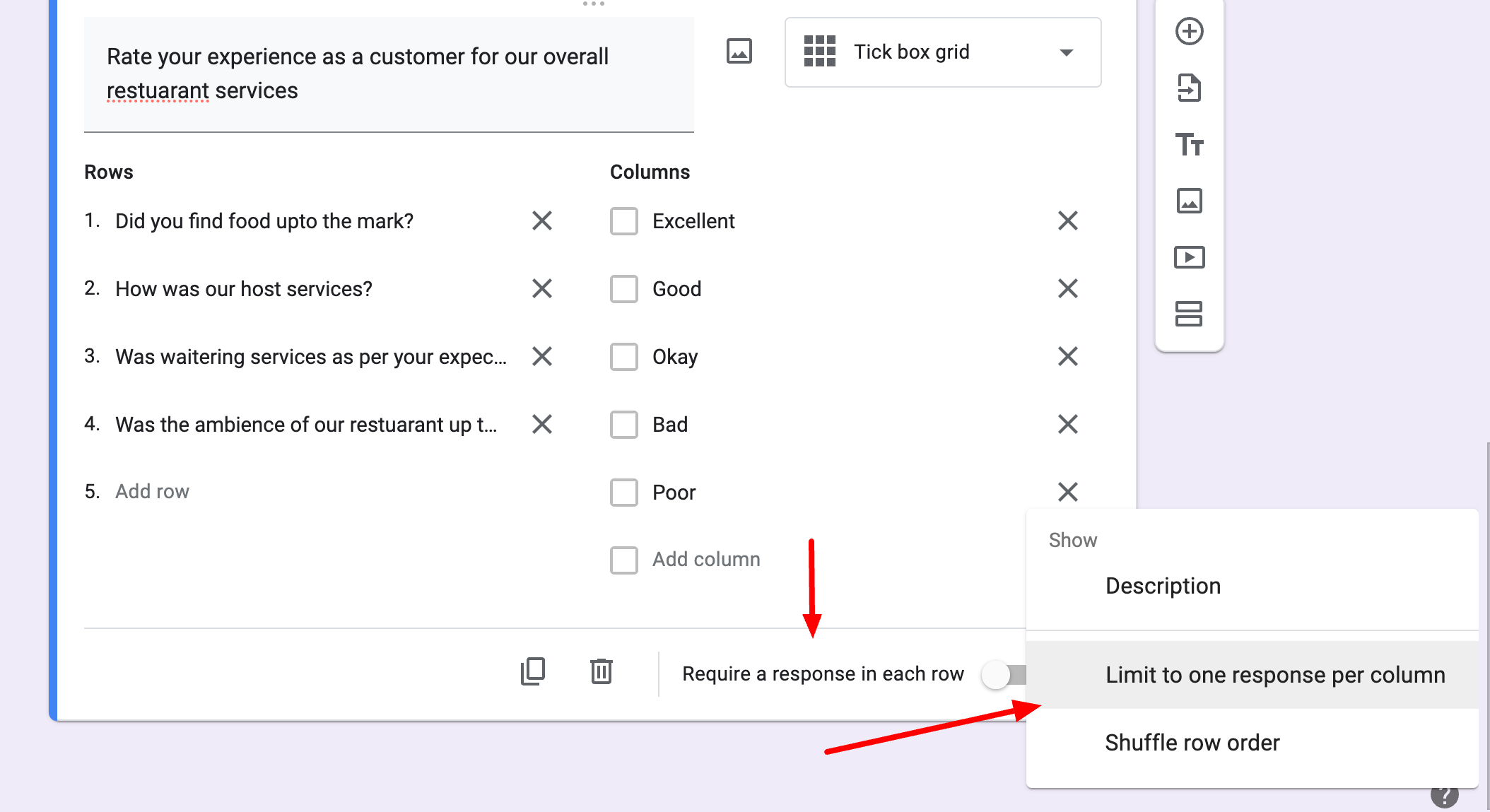
4. Share and analyze Likert scale surveys
Preview the Likert scale survey and then share the form via email, link, embed HTML, or through social media platforms like Twitter and Facebook.
You can also connect this Google Form with Google Sheets from the Responses tab and interpret the responses you’ll receive from there. Besides, you can also present responses in a visual way through bar graphs and charts.
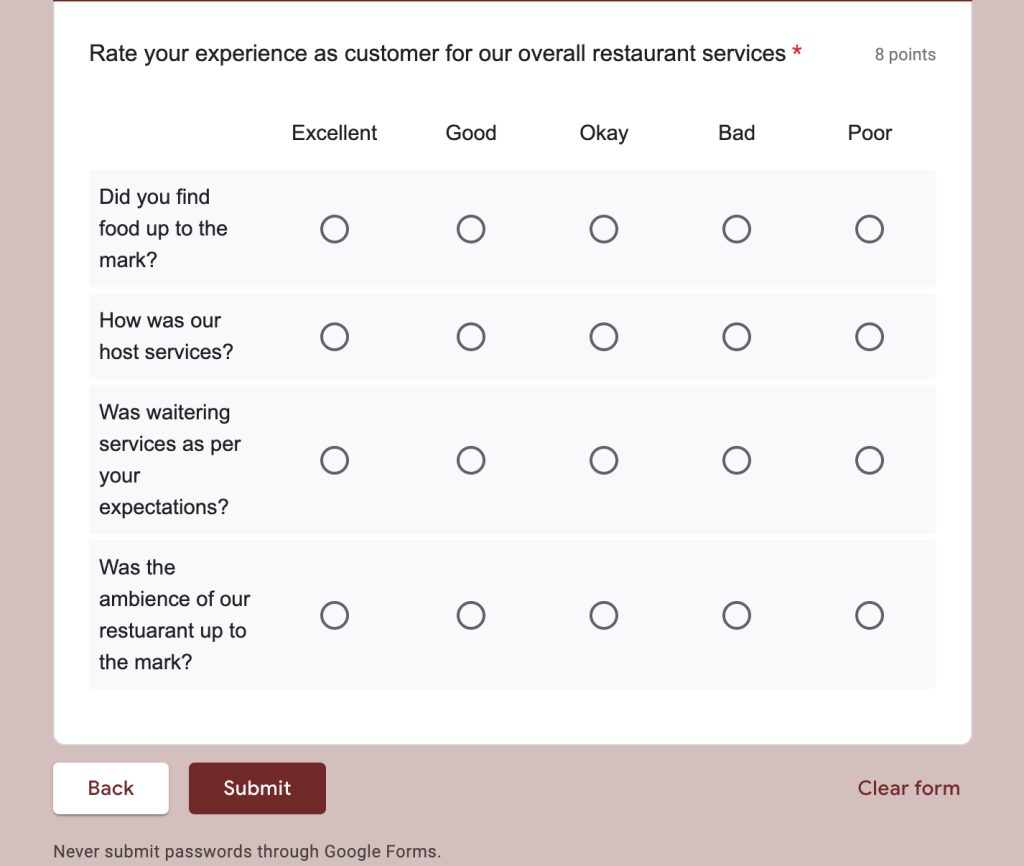
These are the steps to create a 5-point Likert scale or even a 7-point Likert scale.
Note* – If you want to add a timer to your survey or want to add deadlines there is an add-on for Google Forms that not only adds a countdown timer but is also useful if you want to add proctoring feature to your quiz or test.
ExtendedForms is the Google Forms timer and proctor app that you can use to add timers and deadlines, and even use the auto-submit feature. Install the add-on from Google Marketplace and then configure the settings to do so.
Tips to Create an Effective Likert Scale Survey
Just knowing the purpose of the Likert scale won’t help you. For Likert scale surveys to bring credible outcomes, you must also be proficient in creating effective Likert scale questionnaires.
Here are our tips on creating the perfect Likert scale survey –
1. Try to be as specific as possible
Likert scale questions must be curated with specificity and framed in a way to encourage more accurate results. Know that misinterpretation only leads to more confusion, what you ask you shall receive according to that only.
2. Select Appropriate Response Scale
It would be best if you chose types of response scales to use – Unipolar and Bipolar scales. The unipolar scale has options that start from none to maximum, making sure the extreme ends have a one-way scale like not at all helpful to very helpful.
On the other side, the bipolar scale has options consisting of words opposite to each other, for instance, satisfied to dissatisfied. However, the unipolar scale is easier to understand and is the preferred option. Make sure the scale must be relatable to the question and as clear as possible.
3. Create statements & responses to identify your research
Likert scale is often used when you want to understand something that requires more than one question. Because you’ll be asking multiple questions in your survey, making sure the statements analyze different indicators of your research is important.
So, create statements that consist of a balance of positive and negative indicators. For example, positive words like – “using social media has made social life interesting.” The negative statement will be like – “using social media has made social living worse.” When you get clear-cut answers, it means the responses are reliable.
4. Use Questions rather than statements
Statements carry an implied risk – most people tend to agree rather than disagree with statements [this is called acquiescence bias]. It’s more effective to ask questions than to make a statement. However, that doesn’t mean you ask leading questions.
5. Keep it consistent
Make sure to stay true to the scale you’ve used in the survey. If you have used a 5-point Likert scale survey then keep it that way everywhere. Apart from that, keep the formatting of your scale consistent.
Wrap Up
Well, now that you know how to create a Likert scale survey and make it an effective one. It’s up to you to create a great Likert scale survey and present survey analysis more accurately, that provides you a deeper perspective into your target audience.
You must check out ExtendedForms as well to know more about the add-on and do try the free version of the app and know for yourself.
